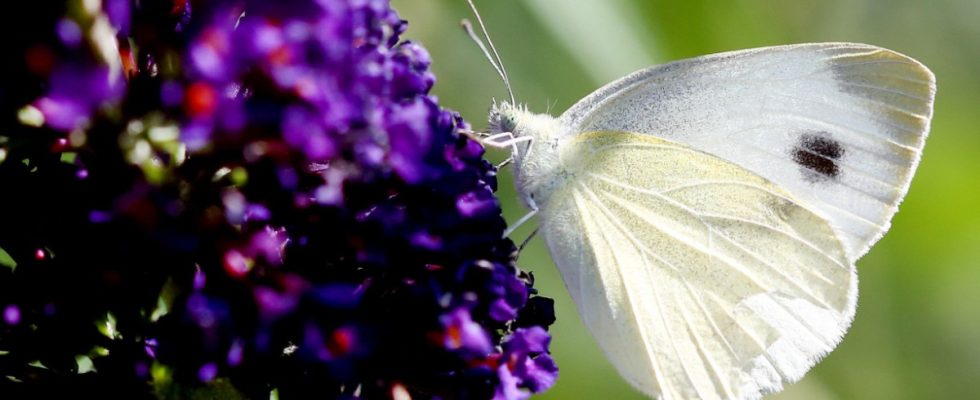Many people have the impression that this summer there are fewer butterflies than in previous summers. Even if the flowers try so hard with their blossoms: not a butterfly far and wide. There are no official figures, but “we have indications and are hearing from observations that there are fewer butterflies this year,” says Martin Musche from the Helmholtz Center for Environmental Research (UFZ) in Leipzig. Nevertheless, he warns against hasty conclusions.
A nationwide butterfly decline in 2023 has not really been proven so far. Musche analyzes the data of the Project Butterfly Monitoring Germany, for which volunteers have been walking around 500 fixed routes nationwide for more than 15 years. They count diurnal butterflies to collect population data on the development of 70 to 80 species. Musche asks for patience: “We won’t get the numbers for 2023 until next year.” And that’s just a snippet of what happened.
However, results from campaigns by the Nature Conservation Union (Nabu) indicate bad butterfly times: almost 14,000 participants would hardly have sighted these insects in the counting periods in June and August, said Nabu on Thursday about the “insect summer” projectfor which anyone can report six-legged sightings.
Since this procedure, in contrast to butterfly monitoring, is not standardized, the results must be interpreted cautiously from the scientists’ point of view. “They can be seen as indicators: which species are well represented and which are not? But it is relatively difficult to draw comparisons between years on the basis of this data,” says Musche.
Karl-Heinz Jelinek is a butterfly expert at Nabu in North Rhine-Westphalia and also volunteers to provide data for the UFZ’s butterfly monitoring. The situation on his routes in mid-August was “not that bad at all,” he reports.
A major benefit that experts see in the Nabu count is raising awareness of insects. Last but not least, a study from 2017 shook things up: Volunteer entomologists from the Krefeld Entomological Association reported at the time that the total mass of flying insects in parts of Germany had decreased by more than 75 percent between 1989 and 2016. Butterfly monitoring has not been going on for that long, but since the mid-2000s there has also been a slight decline in the number of individuals across all species considered, which amounts to around ten percent, says Musche.
The trends also did not develop in the same way for all species. “We have winners and losers,” says Musche. Thermophilic species benefited from global warming. “The Karstweißling, an immigrant from the Mediterranean region, has spread all over Germany in recent years.” And the Bramble Fritillary appears further and further north along the Rhine. In such cases, it is not just the climate that is decisive, but also the right biotopes.
“If it’s extremely bad one year, it can still be great the next year.”
The loser is the chimney sweep butterfly, which was once considered one of the most common butterflies in Germany. “The species has not yet recovered from a slump in the drought year of 2018. You won’t find it in many areas of the lowlands in particular,” says Musche.
Experts do not want to overestimate the possible decline in butterflies this year. Individual events can ensure “that there are particularly many or particularly few butterflies in a year,” says Musche. The long-term development is more meaningful. Jelinek emphasizes that populations fluctuate greatly from year to year: “If it’s extremely bad one year, it can still be great the next year.”
Clear reasons for increases and decreases cannot always be named. Weather influences such as severe frost in winter or a cool spring can play a role, but so can parasites. The size of a population also depends on the development of the larvae in the previous year. In 2022 it was extremely dry in many regions – with the possible result that larvae starved because their host plants were suffering, as Jelinek says. “Landscape changes, biotope destruction, over-fertilization and the use of pesticides also play a role.”
Is it possible to do something good for butterflies by planting? Yes, says the expert – if you rely on native species that offer a lot of nectar. From the popular butterfly bush, who, according to Nabu, originally came from Chinahe advises against: It could displace other plants.

